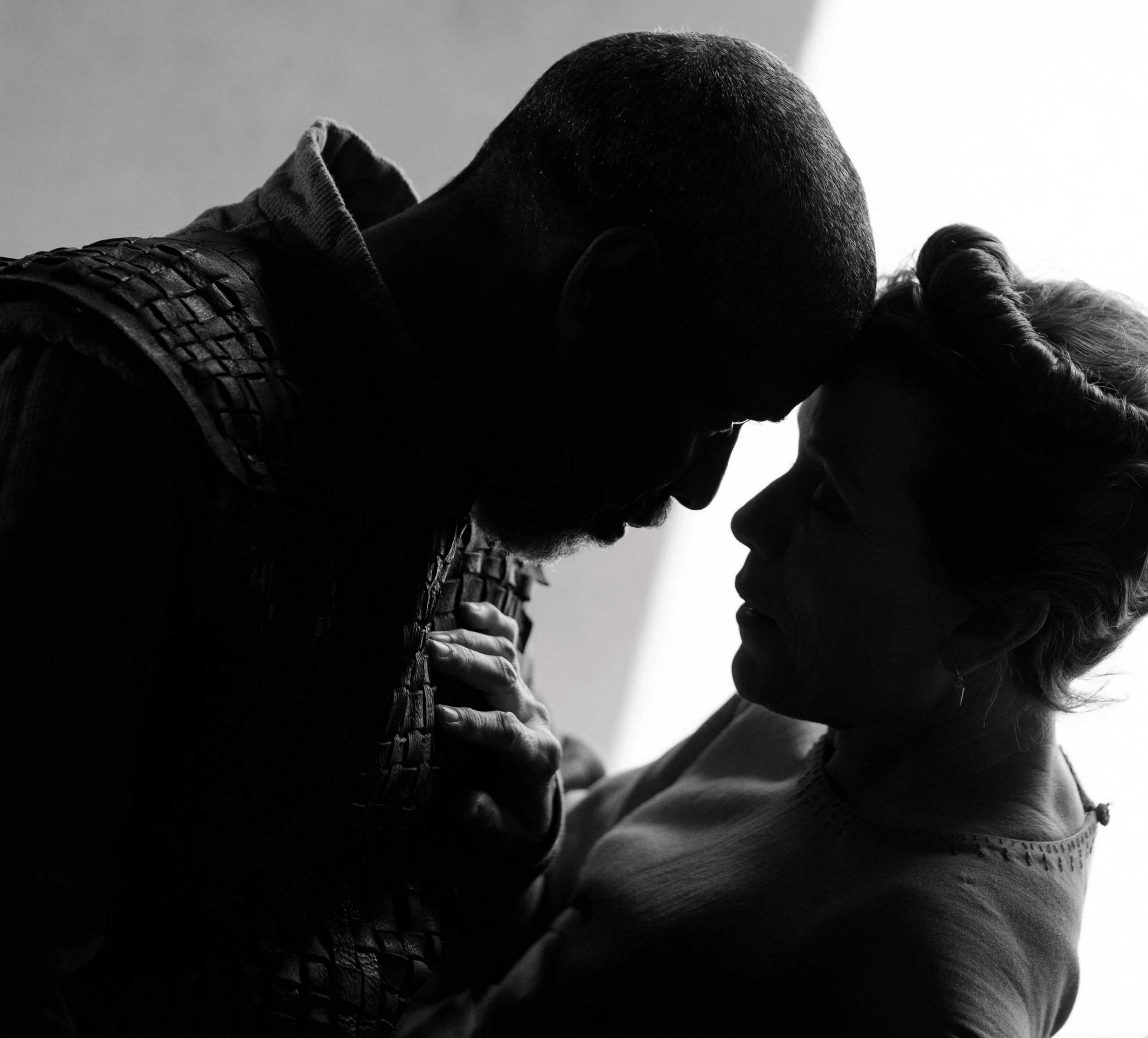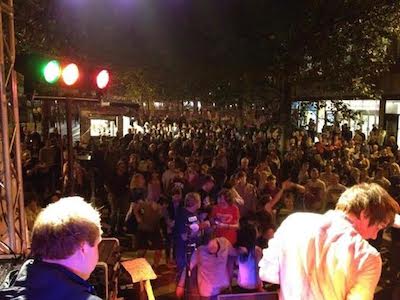Words: Callie Petch
In his 52 years of life, William Shakespeare was credited with penning at least 38 plays. Spanning tragedies to comedies to romances to historical dramas, the vast majority of them becoming foundational texts in the evolution of Western storytelling. And yet, the movie industry’s Shakespearian scope remains frustratingly limited. Sure, they’ve all received an adaptation in some form or another at one point in time, but we seem to gravitate towards the same three or four lode stars rather than exploring the true scope of the Bard’s bibliography. You know the ones I’m talking about. Romeo & Juliet, Hamlet, A Midsummer Night’s Dream, and Macbeth. Almost like clockwork, a new adaptation or interpretation or “inspired by” take on these four movies will get a glitzy star-studded filming for the big screen every few years, usually by a “visionary” director of some kind. It feels like a collective failure of imagination, at this point. Why yet again rehash the tale of two star-crossed lovers in fair Verona when Timon of Athens could do with some rehabilitation?
Even more so than Romeo & Juliet, one could argue that Macbeth is the most theatrically played-out Shakespeare text. According to Wikipedia, there have been 17 televised or theatrically-released versions of Macbeth over the last century and change. But that’s a number not counting filmed versions of performances by theatre troupes like the Royal Shakespeare Company, foreign-language revisions to the material such as those in India, the many many “inspired by” takes on the source material like (altogether now) The Lion King, or works where the play of Macbeth is prominently featured inside the story such as with Dario Argento’s giallo Opera. At this point, one could reasonably argue that there’s not all that much a filmmaker can do with the text anymore. Macbeth is Macbeth. “When shall we three meet again,” noble Lord Macbeth corrupted by visions of power, erstwhile hero Macduff, scheming then mania-lost Lady Macbeth, “out, damned spot!,” “none of woman born,” “double double, toil and trouble,” “from his mother’s womb, untimely ripped,” etc. etc. Everybody knows the tale and you have to actively go out of your way as a filmmaker to screw up Macbeth. Any new version of Macbeth lives and dies, therefore, on the staging.
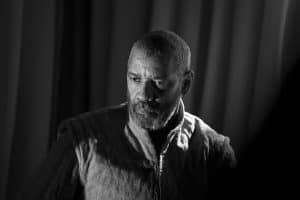 For his first feature directorial effort without brother Ethan by his side, Joel Coen has gone for the traditionalist almost 1:1 translation of the original text. The Tragedy of Macbeth (Grade: B-) does not alter the structure, does not move or update the setting, and nor does it contain (to my ears at least) any revisions to the play’s classical dialogue to make the patter more Coen-y. If you’re going in curious to see what one-half of the writer-director team which brought you Raising Arizona, Fargo, No Country for Old Men, and Inside Llewyn Davis was gonna do to revolutionise Shakespeare, the answer turns out to be “not a whole lot.” The Tragedy of Macbeth is, well, Macbeth.
For his first feature directorial effort without brother Ethan by his side, Joel Coen has gone for the traditionalist almost 1:1 translation of the original text. The Tragedy of Macbeth (Grade: B-) does not alter the structure, does not move or update the setting, and nor does it contain (to my ears at least) any revisions to the play’s classical dialogue to make the patter more Coen-y. If you’re going in curious to see what one-half of the writer-director team which brought you Raising Arizona, Fargo, No Country for Old Men, and Inside Llewyn Davis was gonna do to revolutionise Shakespeare, the answer turns out to be “not a whole lot.” The Tragedy of Macbeth is, well, Macbeth.
That’s not to say Coen is only bringing his name and a murderer’s row of accomplished character actors who have somehow never been professionally filmed performing this play before to the table. The last big Macbeth adaptation, Justin Kurzel’s take in 2015 with Michael Fassbender and Marion Cotillard, chose to ground the story in artfully-rendered dirt and viscera; a sort of psychological war epic. Tragedy of Macbeth goes the polar opposite route with Coen stripping the staging and arrangements waaaaaaay back into the realm of abstraction. Coen and production designer Stefan Dechant shoot the entire thing on soundstages that set decorator Nancy Haigh only sparsely dresses with imposing columns which rarely seem tethered to any tangible land and cinematographer Bruno Delbonnel lenses in an utterly cold totemic manner. Locating a midpoint between an abstract theatre stage and 1920s German expressionist horror, the latter made especially clear in the boxy academy ratio and black-and-white filming.
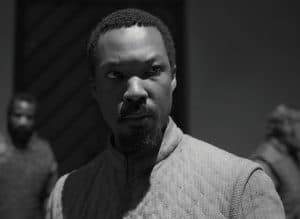 The results are austere and atmospherically intoxicating. Castle halls never once appear lived-in, every body existing within its space akin to ghosts making a temporary futile stay. Shadows dance across low-lit canvases, plotting downfalls and succumbing to madness. The architecture is almost brutalist in its design, subtly enhancing the paranoia sensations that the Macbeths go through by trapping them in an uncaring unchanging box which constantly makes them look small and insignificant. A similar unreal minimalism occurs when it comes time for Coen to depict the visions which plague Macbeth and witches who bring them to him. Effective visual trickery, chill-inducing amounts of fog, and a magnetic contortionist performance of all three witches akin to a split personality by Shakespeare veteran Kathryn Hunter make this the creepiest telling of Macbeth in a long while.
The results are austere and atmospherically intoxicating. Castle halls never once appear lived-in, every body existing within its space akin to ghosts making a temporary futile stay. Shadows dance across low-lit canvases, plotting downfalls and succumbing to madness. The architecture is almost brutalist in its design, subtly enhancing the paranoia sensations that the Macbeths go through by trapping them in an uncaring unchanging box which constantly makes them look small and insignificant. A similar unreal minimalism occurs when it comes time for Coen to depict the visions which plague Macbeth and witches who bring them to him. Effective visual trickery, chill-inducing amounts of fog, and a magnetic contortionist performance of all three witches akin to a split personality by Shakespeare veteran Kathryn Hunter make this the creepiest telling of Macbeth in a long while.
Outside of the visuals, Tragedy’s unique virtues come more from a series of high-quality performances. More than just Denzel Washington (as Macbeth), Frances McDormand (as Lady Macbeth), and Corey Hawkins (as Macduff) being highly committed and captivating actors who expectedly tear into Shakespearian dialogue with relish and vigour; it’s their physical performances which really make the turns sing. You could honestly run the entire film on mute yet know every single character inside and out just from the physicality of their actors. The nobility of Macbeth slinking away until all that remains is a scared embittered thug, Washington carrying himself in a manner which slowly becomes more hunched and closed-off. The duplicitous scheming glee of Lady Macbeth giving way to a dawning guilt-ridden terror over what she and her husband hath wrought, McDormand’s soul almost visibly leaving her body in the story’s second half as she becomes more a living spectre than person. Every performance is like that and I’m looking forward to the hopefully inevitable fan edits which do turn this into a true silent movie; I have a feeling they’ll work just as well as the released director’s cut.
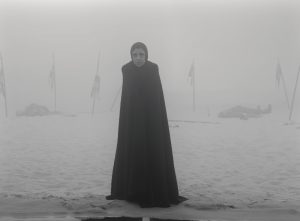 On the note of Washington and McDormand, and befitting the fact that any traditionalist take on Macbeth is going to be more interesting for how the subtle meta-changes alter the material, their casting adds a few additional subtextual wrinkles here and there. Their being significantly older than the characters are usually written adds an almost selfish nihilistic current to the Macbeths’ quest for power. An older generation figuring that they’ve got nothing to lose in a power-grab since they’ll be pushed out soon anyway, whilst their ritualistic backstabbing of former friends and confidants carries somewhat greater internal weight which enhances the mental decline of both protagonists in the second half. Making Macbeth Black but keeping Lady Macbeth White, meanwhile, adds a fascinating and not-belaboured racial undercurrent to their relationship. Honourable Black men being corrupted by the machinations of White women; one saved from careening well off the cliff into problematic territory by similarly making Macduff Black. Neither of these changes manifest heavily in the text or radically alter the subtext in a meaningful way, but they are unique flourishes which provide a little fresh meat to chew on.
On the note of Washington and McDormand, and befitting the fact that any traditionalist take on Macbeth is going to be more interesting for how the subtle meta-changes alter the material, their casting adds a few additional subtextual wrinkles here and there. Their being significantly older than the characters are usually written adds an almost selfish nihilistic current to the Macbeths’ quest for power. An older generation figuring that they’ve got nothing to lose in a power-grab since they’ll be pushed out soon anyway, whilst their ritualistic backstabbing of former friends and confidants carries somewhat greater internal weight which enhances the mental decline of both protagonists in the second half. Making Macbeth Black but keeping Lady Macbeth White, meanwhile, adds a fascinating and not-belaboured racial undercurrent to their relationship. Honourable Black men being corrupted by the machinations of White women; one saved from careening well off the cliff into problematic territory by similarly making Macduff Black. Neither of these changes manifest heavily in the text or radically alter the subtext in a meaningful way, but they are unique flourishes which provide a little fresh meat to chew on.
Which brings us to the elephant in the room… I cannot bring myself to love The Tragedy of Macbeth and it’s almost entirely because I personally just cannot jive with a 1:1 translation of Shakespearian dialogue in a non-stage format. To me, translating those plays with almost no changes for the medium of film, especially those famous monologues and contemporary verbiage, comes off as overwrought and faintly ridiculous with unnatural rhythms and excessive verbosity. Without updating or simply using the skeletal framework of these plays to make a completely different adaptation – ala turning The Taming of the Shrew into 10 Things I Hate About You – I just cannot get into them in a movie-based context. Something ineffable gets lost in translation.
 To be clear, I am well aware that this is entirely a Me problem and my being complete garbage rather than anything wrong with Joel Coen’s The Tragedy of Macbeth – you are reading the words of somebody who sincerely prefers She’s the Man to its inspiration Twelfth Night. Frankly, Coen’s take on the material is academically faultless and, even if it never quite overcomes the “this again?” sensation, maybe the best film version of Macbeth yet made. But for me, I can appreciate the thing whilst remaining largely unmoved. If you do like traditionalist Macbeth, go ahead and bump that grade up an entire letter to an A-. Likewise, if you really do not care at all for traditionalist Macbeth, maybe knock it down a couple of notches to a C. …it’s Macbeth.
To be clear, I am well aware that this is entirely a Me problem and my being complete garbage rather than anything wrong with Joel Coen’s The Tragedy of Macbeth – you are reading the words of somebody who sincerely prefers She’s the Man to its inspiration Twelfth Night. Frankly, Coen’s take on the material is academically faultless and, even if it never quite overcomes the “this again?” sensation, maybe the best film version of Macbeth yet made. But for me, I can appreciate the thing whilst remaining largely unmoved. If you do like traditionalist Macbeth, go ahead and bump that grade up an entire letter to an A-. Likewise, if you really do not care at all for traditionalist Macbeth, maybe knock it down a couple of notches to a C. …it’s Macbeth.
Whilst we’re out here dishing all the spiciest uncultured cretin takes, it’s time for me to publicly admit that I just did not care much for Joanna Hogg’s The Souvenir. I know, I know. Pure sacrilege. Hogg’s 2019 semi-autobiographical coming-of-age drama about a film student, Julie (Honor Swinton Byrne), and her turbulent doomed relationship with a heroin-addicted civil servant (Tom Burke) was… fine. It was just sorta fine. The cinematography by David Raedeker was very well composed. The performances were strong, particularly from Byrne to such a degree that the meta-wink-wink of casting her mother (one Tilda Swinton) as Julie’s in-universe mother wasn’t a deeply smug piece of nepotism. Every now and again, Hogg would find a really insightful couple of details about her characters or the time and place of late-70s Sunderland. If nothing else, I still remember and really appreciate the character detail of having Julie’s music preferences be the punk and ska scenes of the time she passionately dances to, whilst her deadbeat civil servant beau exclusively and passively listened to opera and classical; subtle but telling character work.
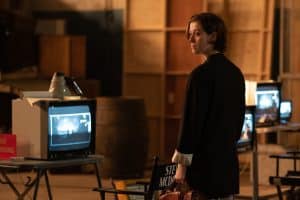
Photo by Joss Barratt.
But the whole of the thing I just did not care for in the least. Partly this was down to the film’s maddening attempts to integrate class into its narrative. Class differences being another differential between Julie and Anthony indicating their fundamental incompatibility, plus a subplot of Julie struggling to make rent despite her family being loaded, explored in a manner which came off as hopelessly blind to its own privilege which my working-class self found pretty insulting. Partly this was because those striking moments of insight and specificity to me were just those; moments, brief flashes the rest of the film lacked. For a movie supposedly semi-autobiographical, I never really got a sense of any specific emotions, of any weight or lived experience. It was all weirdly detached, self-serious and cold.
Most importantly, though, I just did not give a shit about the central relationship. Julie and Anthony had no chemistry, no moments of romance, and at no point did I understand why she would want to spend even five minutes with this guy, let alone why this relationship would supposedly be the defining chapter of her life. To some degree, this was the point. Anthony was an emotional abuser, a walking red flag machine, and a selfish addict who gaslit and leeched off of a strong independent young woman until she was under his thumb and able to facilitate his heroin fix. You’re not supposed to like him. But Hogg, to my eyes, failed to communicate why Julie would like him, even at the very outset with his pretentious neg-y views on art and what Julie likes. The supposed tragedy of his fatal overdose at the story’s end, and its resultant traumatic and depressive impact on Julie, meant nothing if I was spending every second from the instant he stepped on-screen going “why do you care about him?!”
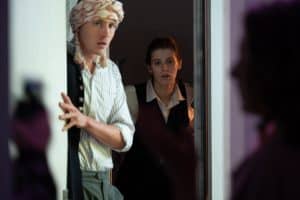
Photo by Rob Youngson.
I think I get The Souvenir. I get what it’s about, I get what it’s trying to do, I get why other people may have been moved deeply by it, and I get that it may just not have been for me. It definitely did not help that the film stopped after two hours without any real resolution or conclusive point, booting a viewer out with an end-credit card for the sequel they had not greenlit or started shooting at time of release. The worst thing an ever so slightly pretentious arthouse drama can do is lock the doors and turn off the lights without having achieved anything in the two hours it spent artfully and very seriously filling time, let alone tell the viewer to come back some point in the unspecified future for the resolution maybe.
Well, now the resolution is here and if you’ve found yourself yelling at the screen “Callie, are you ever going to get around to talking about The Souvenir: Part II (Grade: C) instead of The Souvenir?” you may have cottoned onto the destination already. Joanna Hogg’s sequel is, indeed, the second half of The Souvenir and is therefore the same movie. In following Julie’s efforts to mentally recover from Anthony’s death by turning their romance into her final film school project, Hogg’s newest has all the same positives and drawbacks as her previous. On a technical level, it is immaculately made. Raedeker’s cinematography continues to be lovingly composed and very of-the-era. Most of the performances are really good. Byrne nails the dissociative grief that comes from losing a loved one, walking through scenes but rarely existing in them, plus a struggle to communicate in both the art she’s trying to make and the relationship she’s chosen to try depicting on-film despite almost everyone else on her crew failing to see what she sees.
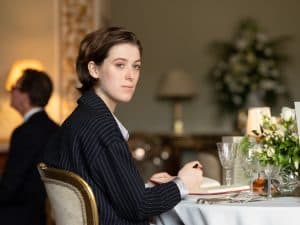
Photo by Joss Barratt.
Just like last time, the best moments are inarguably the stretches where Julie is on-set or in-transit with her film school crew struggling to turn what she sees in her head into understandable art. She can’t decently explain motivations to her actors because they don’t get what Julie’s analogues are supposed to see in each other. She’s constantly uncertain about shot placements and lighting arrangements which burns through vital time and money – she’s having to do this on her own penny since the board at her school don’t understand the script and won’t sign off on finance or support (not that this fact ever amounts to anything). Her crew start bickering with each other over the direction of the shoot and her response is often just to close up and let them work things out rather than assert control or confidence. As someone who went through film studies and a required short film module in university, I can attest to the reality of almost all these situations and how finely observed Hogg depicts these experiences. These bits feel real, understandable, lived-in and coursing with emotion.
The rest of The Souvenir: Part II… I’m sorry, I still just don’t feel much of anything and it’s for the same reasons as last time. Hogg keeps trying to bring class differences into her story with the aforementioned fact of Julie’s film being made without financial support from her school, but does so in a way which just makes her look blindingly out-of-touch since these threats of financial difficulty never amount to anything in-universe. Julie is always comfortable, the film’s budget never actually runs out, she’s quite happy to keep relying on her obscenely wealthy parents who too are quite happy to be relied upon. It comes off like somebody used to shopping at Sainsburys treating the prospect of having to shop at ASDA as something worthy of an existential crisis.
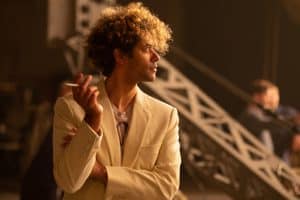
Photo by Joss Barratt.
As before, the flashes of specificity in the film school sojourns expose how weirdly general the rest of the film can be. Julie’s character is heavily internal, but everybody in her orbit is lacking in any character let alone dimensionality. For every fascinatingly nuanced scene of Julie arguing with her DP over how best to light and shoot a bathroom set, there’s a frankly silly boilerplate sequence of Richard Ayoade playing a borderline-incompetent director yelling non-specifically about how badly everyone is ruining his film. (This is a major shame because Ayoade was a welcome comedic highlight of the first Souvenir, but he and his character are out-of-place here.) And just like last time, the film has a bizarre emotional hole in its centre which meant I struggled to care about Julie’s emotional damage and eventual catharsis.
Much more damningly, I found myself spending the length of the in-universe film Julie makes about her and Anthony’s relationship wondering whether it was supposed to be a pretentious and faintly-ridiculous Baby’s First German Expressionist twaddle, or the attempted emotional catharsis for a combined 200 minutes of cinema whose execution had therefore been completely bodged. If it’s the former, then what on earth possessed Hogg to think that deliberately undercutting the payoff of two very self-serious (arguably to their detriment) movies for a gag about pretentious film students was a good idea? And if it’s the latter… I hate to break this to her, but The Mitchells vs. The Machines explored that same “pretentious film student utilises her art as a means of therapy” ground much more richly as a subplot in a kids’ movie about the Internet trying to kill us all.
Look, I get these movies. Really, I do. I get what they’re trying to do. I get what they are about. And I can see why so many people come away from The Souvenirs with raves and adoration. I can see why The Souvenir and The Souvenir: Part II would work for some folks. They just might not be for me, and that’s fine. But, after watching 218 minutes of cinema, I can’t help but question why Joanna Hogg couldn’t have just hired a therapist to work through her issues like the rest of us have to.
 Let’s end our proper LFF coverage on a fully positive note. Jonas Poher Rasmussen’s Flee (Grade: B+) is not a refugee documentary. This was something he took great pains to stress in both the introduction and post-screening Q&A. Flee’s subject, Amin (real name changed to protect his identity for reasons which become clear as the film progresses), is a refugee from Afghanistan and the film’s narrative does largely chronicle his years-long journey to Denmark as a teenager where he met and befriended Rasmussen. But it’s not a refugee documentary. By which, Rasmussen means, the film doesn’t try to fixate on his refugee status or the specifics of his journey. Likewise, Flee is not a queer documentary. Amin is gay, his growing understanding of his queerness is likewise chronicled by the film’s narrative, and the impetus for Amin talking about his refugee past for the first-time stems from his reticence to share this story with his soon-to-be-husband. But it’s not a queer documentary. It is not fixated on his queerness or the struggles/fears of being gay in an often-traditionalist Middle Eastern household.
Let’s end our proper LFF coverage on a fully positive note. Jonas Poher Rasmussen’s Flee (Grade: B+) is not a refugee documentary. This was something he took great pains to stress in both the introduction and post-screening Q&A. Flee’s subject, Amin (real name changed to protect his identity for reasons which become clear as the film progresses), is a refugee from Afghanistan and the film’s narrative does largely chronicle his years-long journey to Denmark as a teenager where he met and befriended Rasmussen. But it’s not a refugee documentary. By which, Rasmussen means, the film doesn’t try to fixate on his refugee status or the specifics of his journey. Likewise, Flee is not a queer documentary. Amin is gay, his growing understanding of his queerness is likewise chronicled by the film’s narrative, and the impetus for Amin talking about his refugee past for the first-time stems from his reticence to share this story with his soon-to-be-husband. But it’s not a queer documentary. It is not fixated on his queerness or the struggles/fears of being gay in an often-traditionalist Middle Eastern household.
Rasmussen doesn’t want Amin to be defined as solely a refugee or solely a gay Afghani. With Flee, he instead wants his friend Amin to be Amin. A kind-hearted, funny, charming, principled guy who is more than his past despite the weight of said past and how much it has shaped the man who lays down on top of a couch with a camera hanging directly overhead. Recorded over the course of a year, Flee carries the confessional intimacy of a therapy session and the conversational intimacy of two trusted friends opening up fully and naturally to each other. Not for nothing do the majority of Amin’s scenes in the framing device show him in that therapy couch-reminiscent position, this is very much a film about trauma and the vital power in being able to admit that trauma to oneself and others.
 Rather than the logistics and specifics of Amin and his family’s many attempts to escape into Western Europe, although there are heartbreaking examples of those relayed throughout, Rasmussen is more interested in the after-effects of those traumas. How surviving those experiences manifests in Amin’s personality as a necessary but ultimately detrimental survival mechanism he needs to work through. The conversational dynamic between both men ends up being vital in getting Amin to open up so candidly not just about his experiences but also his personality. Details about Amin and his family’s time forced to live under the radar in Russia paint such a vivid picture of crushing mundanity due to that carefully-maintained trust. Whilst that same trust is what enables Amin to become downright jovial and jokey when discussing the early signs that he may have been homosexual. (Wouldn’t you just know that a-ha and Jean-Claude Van Damme were pretty foundational to an 80s-born child recognising their onset queerness?)
Rather than the logistics and specifics of Amin and his family’s many attempts to escape into Western Europe, although there are heartbreaking examples of those relayed throughout, Rasmussen is more interested in the after-effects of those traumas. How surviving those experiences manifests in Amin’s personality as a necessary but ultimately detrimental survival mechanism he needs to work through. The conversational dynamic between both men ends up being vital in getting Amin to open up so candidly not just about his experiences but also his personality. Details about Amin and his family’s time forced to live under the radar in Russia paint such a vivid picture of crushing mundanity due to that carefully-maintained trust. Whilst that same trust is what enables Amin to become downright jovial and jokey when discussing the early signs that he may have been homosexual. (Wouldn’t you just know that a-ha and Jean-Claude Van Damme were pretty foundational to an 80s-born child recognising their onset queerness?)
To that end, Rasmussen’s decision to realise Flee almost entirely in limited animation ends up being more than just a necessary precaution to protect Amin’s identity. The animatic-esque designs realise that safe-space dynamic of Amin’s storytelling with great tact and respect, almost like a storybook which represents how deep these memories remain engrained in his soul. The production constraints mean that more intense and distressing scenes are realised in abstract pencil sketches, but also create the subliminal communicative effect of them being the most painful moments in Amin’s life which he has trouble discussing as a vital compartmentalisation. By contrast, the times where Amin gets to relax and be a kid or go out and safely express his queerness pop with a joyful colour which emphasises the film’s focus on hope above all. The freeing moments of being able to live rather than merely survive.
 Honestly, my sole complaint against Flee is that I wish it were longer or at least spent more time on Amin’s eventual adjustment to life in Denmark. Partly because it would allow Rasmussen even more to ensure that Amin does not end up defined by his efforts to escape persecution. But mainly because a longer film which went into greater detail about Amin’s time in Denmark and relationship with his fiancé would let me spend even longer in the man’s company and get to know him further. After watching Flee, I don’t feel one-dimensional pity for Amin because he’s a refugee or a gay person successfully coming to terms with his sexuality. I instead feel admiration and respect for a man who he seems like a really sweet guy carrying a lot of weight that deserves the world. Rasmussen has done right by his friend.
Honestly, my sole complaint against Flee is that I wish it were longer or at least spent more time on Amin’s eventual adjustment to life in Denmark. Partly because it would allow Rasmussen even more to ensure that Amin does not end up defined by his efforts to escape persecution. But mainly because a longer film which went into greater detail about Amin’s time in Denmark and relationship with his fiancé would let me spend even longer in the man’s company and get to know him further. After watching Flee, I don’t feel one-dimensional pity for Amin because he’s a refugee or a gay person successfully coming to terms with his sexuality. I instead feel admiration and respect for a man who he seems like a really sweet guy carrying a lot of weight that deserves the world. Rasmussen has done right by his friend.

